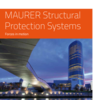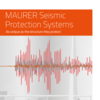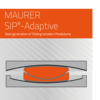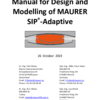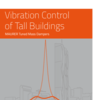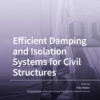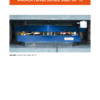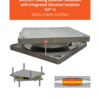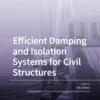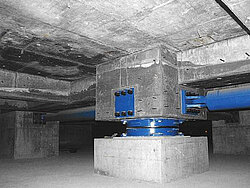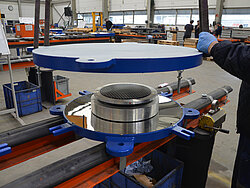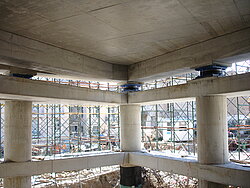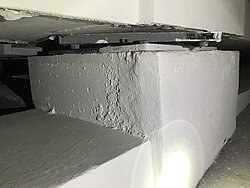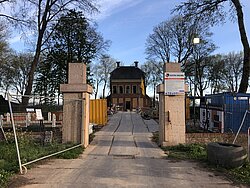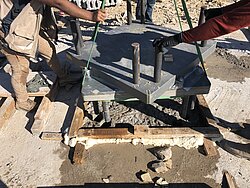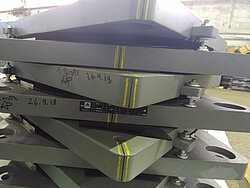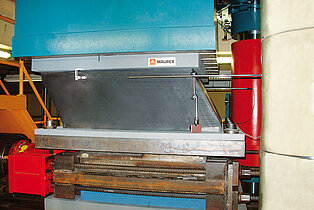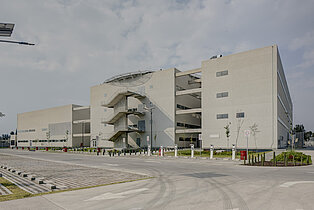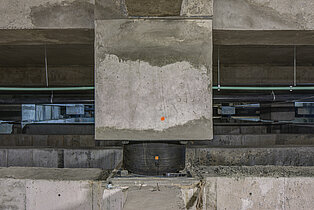Isolators
MAURER isolators are specially modified structural bearings that enable effective decoupling of a structure from the foundations. This results in the vibration period of the structure being increase to the the range of two and five seconds. At the same time, increased damping through energy dissipation in the structural elements causes an additional decrease in acceleration and ultimately of forces in the structure. Lower acceleration by a factor of two to five means that severe structural damage through seismic impact can be averted.
| MAURER Isolators | Sliding pendulums and sliding isolators | Elastomeric bearings |
| Displacement capacity | ≥ ±1.5 m | < ±500 mm then not economically viable |
| Rotation capacity | ≥ ±0.3 rad | < ±0.015 rad |
| Temperature | -50° to +80°C | -30° to +50°C |
| Size | small to medium | large |
| Service life | > 50 years | 30 years |
| Isolation period | 2 - 6 sec | < 3 sec |
| Change after earthquake | 4 - 6 MCE events possible, no wear | 2 - 3 MCE events possible |
| Maintenance | virtually maintenance-free | virtually maintenance-free |
Sliding isolators - SI
MAURER sliding isolators are flat structural bearings with special energy dissipation properties when horizontally displacing. Using the MSM® sliding material in lubricated and unlubricated conditions can determine the friction for energy dissipation damping. As a rule, these bearings are combined with elastomeric bearings (MLRB or similar) to provide the necessary recentring. SI sliding isolators feature one flat sliding plate that accommodates horizontal displacement but does not produce a recentring effect. Rotation capability is excellent. Ideally they are designed for just one specific magnitude of earthquake.
Sliding isolation pendulum - SIP®
The horizontal motion in sliding isolation pendulums takes place in a concave sliding plate with a defined radius of curvature. The bearing stores potential energy when displacing horizontally by increasing in height. This means that the SIP®s bearing can return to the initial position due to service movement or during and after an earthquake. In addition, the radius of curvature controls the pendulum period that is needed to achieve the response range in areas of low acceleration. Friction in the paired MSM® and stainless-steel sheet produces the required damping to control or restrict horizontal seismic movement. MAURER’s SIP®-V sliding isolation pendulum was developed for a combination of seismic protection and vibration isolation.
SIP®-A adaptive sliding isolation pendulums
produce optimum structural isolation, irrespective of the magnitude of earthquake. The two-phase mode of action ensures low shear resistance during thermal motion and low seismic intensity – very good for designing the foundations/substructure. Damping increases in stronger earthquakes and rigidity may also be increased to. This reduces the seismic motion of the structure. In addition, high rotation capability is ensured.
SIP®-D double sliding pendulum bearings
have an inner puck that moves between two identical concave bearing plates. This doubles motion capacity when compared with a single SIP® with the same diameter. The size of the bearing contact surface can therefore be significantly reduced while maintaining the same movement capacity. There is only limited rotation capability. Typically, the design can be made for just one specific magnitude of earthquake.
SIP®-V double sliding pendulum bearings
Properties are similar to SIP®-D for seismic isolation. Additional isolation for high-frequency vibrations.
SIP® sliding isolation pendulums
have a single concave sliding plate, thus only displacing on this single sliding plate, which leads to a larger bearing plan area. An advantage is that eccentricity of the load transfer only occurs on one side – towards the superstructure or substructure. Rotation capability is excellent. Typically, the design can be made for just one specific magnitude of earthquake.
| Sliding isolation pendulum with recentring | SIP®-A | SIP®-D/ SIP®-V | SIP® |
| Behaviour in the event of minor, frequent earthquakes | ++++ | ++ | ++ |
| Behaviour during DBE (design basis earthquakes | ++++ | +++ | +++ |
| Behaviour during MCE (maximum considered earthquakes) | ++++ | ++ | ++ |
| Size | +++ | +++ | ++ |
| Rotation capacity | ++++ | + | ++++ |
| Shear resistance | ++++ | ++ | ++ |
| Relative displacement | +++ | ++ | ++ |
| Recentring | ++++ | ++++ | ++++ |
| Sliding isolation pendulum without recentring | SI |
| Behaviour in the event of minor, frequent earthquakes | ++ |
| Behaviour during DBE (design basis earthquakes) | ++ |
| Behaviour during MCE (maximum considered earthquakes) | + |
| Size | ++ |
| Rotation capacity | ++++ |
| Shear resistance | +++ |
| Relative displacement | + |
| Recentring | + |
MAURER Base Isolation Tank
youtubeTI SIP-D
pdfPI SIP-V
pdf
Elastomeric bearing with lead core - MAURER Lead Rubber Bearing (MLRB)
Horizontal elastic deformation of the elastomer layers and dissipation of energy in the similarly deforming lead core produce intense damping of the structure and displacements are substantially reduced. These bearings are suitable for major earthquakes.
Elastomeric bearings, with a slight and strong damping effect - MLDRB / MHDRB
The choice of elastomer material results in different degrees of damping. However, when compared to lead core isolators, damping always lower with these bearings. Typically, they are generally used for minor seismic loads or in conjunction with hydraulic dampers.
MAURER Low Damping Rubber Bearing: MLDRB
MAURER High Damping Rubber Bearing: MHDRB

